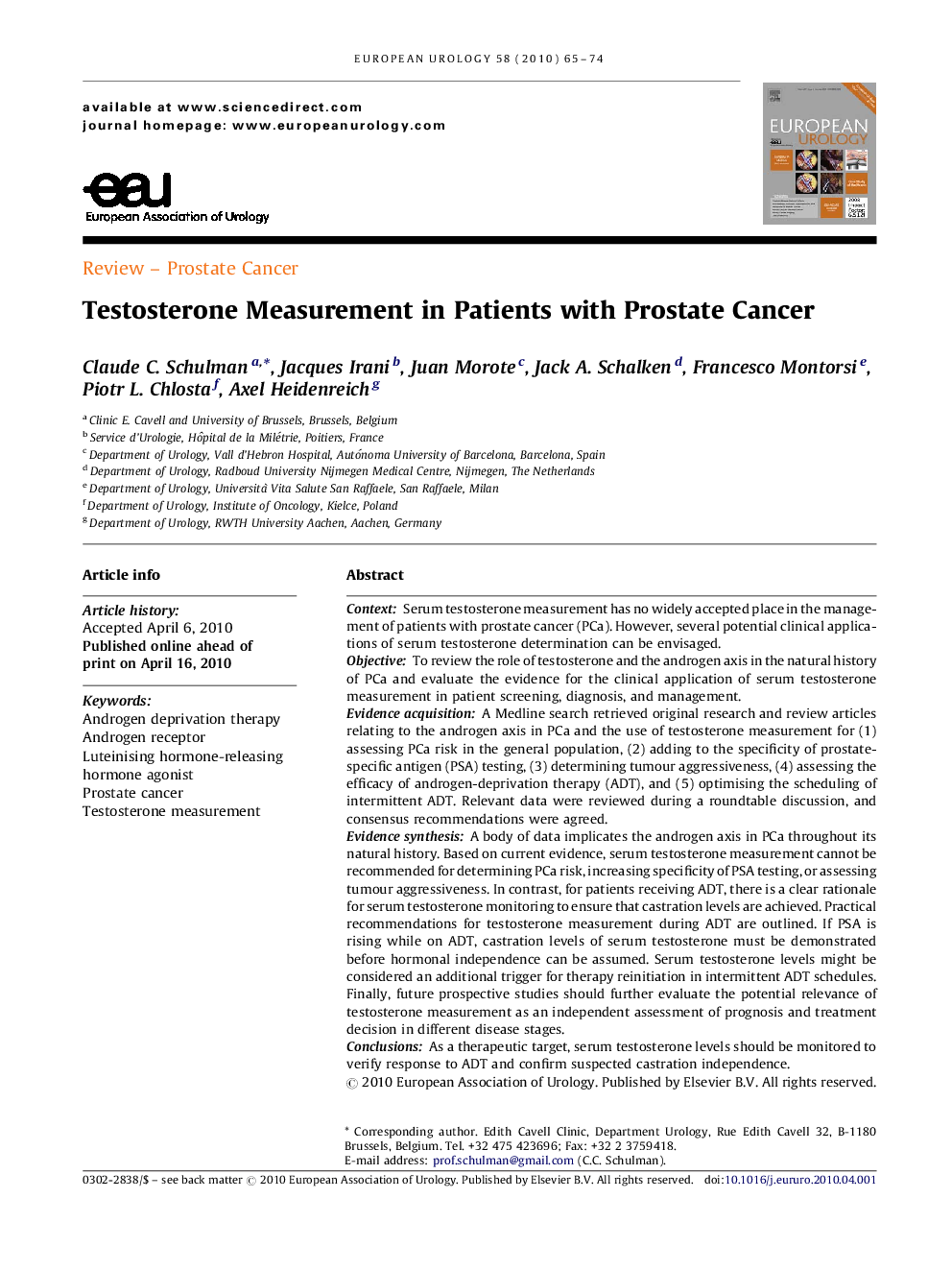| کد مقاله | کد نشریه | سال انتشار | مقاله انگلیسی | نسخه تمام متن |
|---|---|---|---|---|
| 3924418 | 1253102 | 2010 | 10 صفحه PDF | دانلود رایگان |

ContextSerum testosterone measurement has no widely accepted place in the management of patients with prostate cancer (PCa). However, several potential clinical applications of serum testosterone determination can be envisaged.ObjectiveTo review the role of testosterone and the androgen axis in the natural history of PCa and evaluate the evidence for the clinical application of serum testosterone measurement in patient screening, diagnosis, and management.Evidence acquisitionA Medline search retrieved original research and review articles relating to the androgen axis in PCa and the use of testosterone measurement for (1) assessing PCa risk in the general population, (2) adding to the specificity of prostate-specific antigen (PSA) testing, (3) determining tumour aggressiveness, (4) assessing the efficacy of androgen-deprivation therapy (ADT), and (5) optimising the scheduling of intermittent ADT. Relevant data were reviewed during a roundtable discussion, and consensus recommendations were agreed.Evidence synthesisA body of data implicates the androgen axis in PCa throughout its natural history. Based on current evidence, serum testosterone measurement cannot be recommended for determining PCa risk, increasing specificity of PSA testing, or assessing tumour aggressiveness. In contrast, for patients receiving ADT, there is a clear rationale for serum testosterone monitoring to ensure that castration levels are achieved. Practical recommendations for testosterone measurement during ADT are outlined. If PSA is rising while on ADT, castration levels of serum testosterone must be demonstrated before hormonal independence can be assumed. Serum testosterone levels might be considered an additional trigger for therapy reinitiation in intermittent ADT schedules. Finally, future prospective studies should further evaluate the potential relevance of testosterone measurement as an independent assessment of prognosis and treatment decision in different disease stages.ConclusionsAs a therapeutic target, serum testosterone levels should be monitored to verify response to ADT and confirm suspected castration independence.
Journal: European Urology - Volume 58, Issue 1, July 2010, Pages 65–74